Which is the Best Glue for Rubber to Rubber?
We all probably have some variety of all-purpose “super glue” stashed away somewhere in our house. These are great for repairing plastic toys in a pinch or if something falls apart in the kitchen. However, certain materials are a bit more challenging to repair with the usual super glue.
Rubber is a good example of such material. Rubber parts are usually meant to withstand a lot of abuse, so a rubber adhesive must be similarly flexible and impact-resistant. With this knowledge, let’s take a look at the best adhesives for gluing rubber to rubber.
What kind of rubber are you working with?
Further complicating the matter of choosing a suitable glue is the fact that there are a lot of different types of rubber, each with unique characteristics. After all, the term ‘rubber’ is used for any natural or synthetic material that exhibits superior flexibility, impact-resistance, and coefficient of friction.
Before you can choose the best adhesive, it would be prudent to try and identify the rubber you’re working with first. To help you out, here are some of the most common rubber types and how they are typically used:
- Silicone rubber is a soft rubber, typically white or clear, that has a very high resistance to heat. It is commonly found in o-rings, gaskets, enclosures, and seals of cookware and ovenware.
- Nitrile rubber is a fairly tough rubber designed to withstand extreme mechanical stress. Garden hoses and cable jackets are typically made with nitrile rubber.
- Natural rubber is tough to identify since it can be modified to mimic the properties of many synthetic rubbers. It also has a very wide spectrum of applications from gaskets to hoses and automotive parts.
- Butyl rubber is known for its durability and chemical resistance. It is found in specialty chemical gloves, as well as in gas masks, industrial safety equipment, and certain tires.
No matter which type of rubber you have, it’s important to remove any traces of grease on its surface by wiping it down with a solvent. Priming the mating surfaces by sanding or buffing them would also be a good idea.
The top 5 best glues for rubber-to-rubber applications
1. Loctite Clear Silicone Waterproof Sealant
![]()
BEST FOR: Silicone rubber
In almost all cases, the best adhesive to bond any material is the adhesive that is made of the material itself. This is the same concept for using a silicone-based adhesive to bond two pieces of silicone rubber together. The use of silicone adhesives means that the repaired joint loses none of the flexibility, heat-resistance, and waterproofing expected of silicone.
This silicone-based adhesive from Loctite is an example of a single-component glue which we are recommending because of its convenience. It’s easy to apply, requires no mixing, and requires no curing agent. It has temperature limitations, however, so we don’t recommend it for objects that will be used for cooking or for oven linings.
This adhesive does not have a lot of viscosity, so it’s not the most appropriate if you need a glue that can fill a gap. Should this be the case, a silicone-based moldable glue would be a better option.
In any case, keep in mind that silicone is a type of rubber with a low coefficient of friction. This stresses the idea of “priming” the mating surface to give it the glue a roughness to attach onto.
2. Gorilla Super Glue
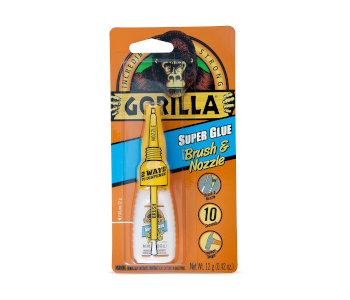
BEST FOR: All types of rubber except natural rubber
If you’re not quite sure what rubber you’re working with, then your best bet might be the good old Super Glue from Gorilla. In more technical terms, this is a cyanoacrylate adhesive that transforms from liquid to plastic after curing. Cyanoacrylate glue works with all but the most difficult types of rubber.
The bonding action of cyanoacrylate glue is purely mechanical in nature and can be improved by enhancing how well the glue “wets” the mating surface. Again, removal of any grease residue and sanding of the mating surface will go a long way in ensuring good adhesion.
The biggest downside of working with cyanoacrylate glue is if you prefer to have ample time to work with your mating pieces because Super Glue sets in less than a minute. It also has a maximum gap-filling capability of 0.5 mm on account of its low viscosity.
3. Devcon 5-Minute Epoxy
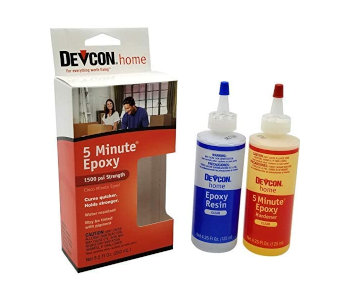
BEST FOR: Nitrile and other hard rubbers
When bonding two pieces of a hard rubber like nitrile, the strength of the resulting bond must also match the strength and impact-resistance of the rubber material. For these situations, we recommend a high-strength two-component epoxy.
Epoxy adhesives are well-known for their all-around versatility and superior strength. This particular glue also benefits from quick-setting characteristics., which is ideal if you need a valve seat or liner fixed instantly. Once the two components have been mixed, you only have around two minutes to line up the pieces. At the 5-minute mark, the epoxy should have completely hardened.
While this epoxy adhesive should also work well for other types of rubber, we would not recommend it for more flexible rubbers like silicone or butyl. The hardened epoxy layer is highly rigid and may fall apart if the joint needs to stretch or bend regularly.
4. Loctite Speedbonder Acrylic Adhesive
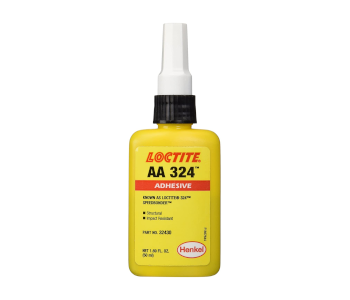
BEST FOR: Natural rubber
Acrylic adhesive is considered by many to be the ultimate adhesive – the kind of glue you use when all others have failed. It is a little more expensive than other glues but has been traditionally used for difficult plastics like PTFE, PP, and PE.
Natural rubber is considered one of the more difficult rubbers to glue, but there’s probably a wide assortment of rubbers out there with additives like plasticizers that also make them hard to glue. To be clear, this adhesive works best with an activator (which is strangely sold separately) to help accelerate its curing. Without the activator, the curing of the adhesive will take up to 48 hours.
Acrylic adhesives are known to have superior shelf-stability, toughness, and durability against deterioration by external factors. The properties of the mated joint can also be enhanced via heat curing, but make sure to read the instructions carefully on how to do this. The joint created by an acrylic adhesive is best described as being industrial-grade in quality.
5. Shoe Goo Shoe Repair Glue
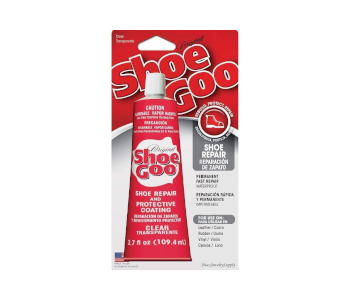
Best for: Shoes
Every single person probably ends up breaking at least one shoe each year. However, not everyone can afford to buy one when this happens. If t this is a situation that you’re familiar with, then a tube of this Shoe Goo adhesive might be a worthwhile investment.
Shoe Goo isn’t as forthcoming about the components of this adhesive. It might be a trade secret, but Shoe Goo has built a solid reputation as the go-to adhesive for shoe repairs. Since most shoes have some rubber components, it’s safe to assume that Shoe Goo will work with other common rubber surfaces.
The benefit of Shoe Goo is that it creates adhesive layers and joints that can withstand the usual conditions that shoes go through. These include constant movement, exposure to moisture, abrasion, and moderate levels of heat. It also creates a clear coat, as it was developed to not detract from the aesthetics of shoes.
Shoe Goo emits irritating fumes while curing, so make sure to use it in a space with good ventilation. It can also take about 8 hours to fully cure.
Final thoughts
What makes the selection of glues for rubber is the fact that ‘rubber’ can refer to a wide array of different materials. This means that really is no single best glue for rubber to rubber applications. Instead, the specific type of rubber and the intended application of the glued pieces should be put into consideration.

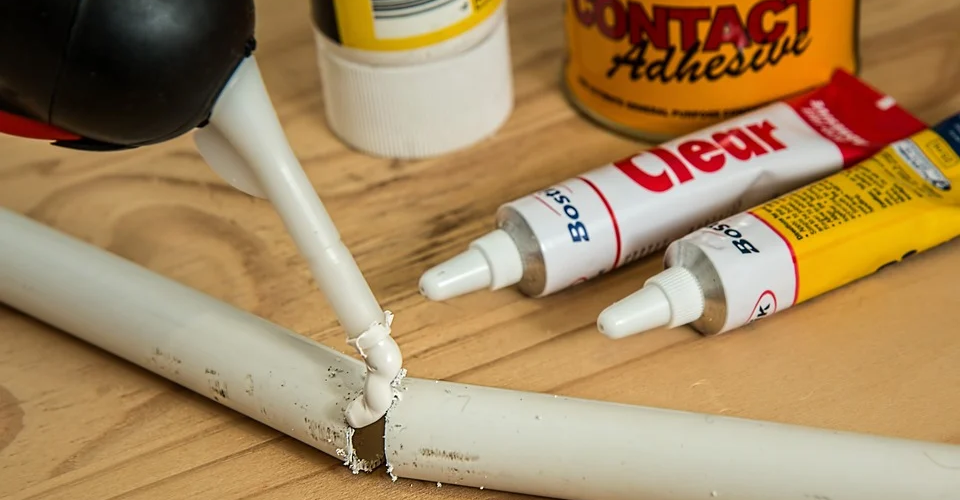
Thanks for the tip that acrylic adhesives can be very effective in gluing two pieces of rubber together. I’m planning to get shoe repairs soon because I’d like to start wearing formal clothes more frequently at work. Having a nice pair of leather shoes would surely elevate my look.
https://www.expertshoeandluggagerepair.com/
WOW.!! Thats quite the clear, concise, Lehman, easy to assimilate summary I’ve read in a “minute”. Thank you kindly for this well written lesson. I really struggle with anything I’m not fluent in. My ADHS is quite rampant. I This is easy to save in my files to refer back on. Again, Thank You,kindly and with tons of gratitude. Ok, now I’m WOW’ing my redundant let of appreciation. With no malice just the facts. lolol. roseburg oregon, angieford.